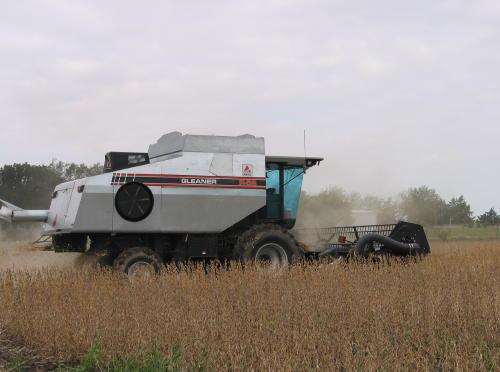|
GROW YOUR OWN FUEL
The vegetables used most often are peanuts, sunflowers, and soybeans
to produce oil. The ten most common oil producing crops around the
world are as follows:

| Plant |
Lb. oil/acre |
Kg. oil/hectare |
| Oil Palm |
4585 |
5000 |
| Coconut |
2070 |
2260 |
| Jatropha |
1460 |
1590 |
| Rapeseed |
915 |
1000 |
| Peanut |
815 |
890 |
| Sunflower |
720 |
800 |
| Safflower |
605 |
655 |
| Soybean |
345 |
375 |
| Hemp |
280 |
305 |
| Corn |
135 |
145 |
The screw press
The screw press is the most common type of oil press. It uses a
large diameter screw inside a metal housing. The vegetable seed
is poured into the top of the press and falls into the churning
screw where it is mashed by the turning threads of the screw and
the oil drips from the bottom of the press. The ram press is a more
efficient press because it uses a hydraulic piston inside of a cylinder
to crush the oilseed.
The oil is then left to settle for a few days in a horizontal settling
tank. Any solids in the oil will settle at the bottom. The oil should
be passed through a 150 micron mesh screen, then through a 70 micron
mesh screen, then 25 micron filter, and finally through a 10-15
micron fuel filter.

How much?
The United States generates over 3 billion gallons of used frying
oil annually, which would equate to 5% of U.S diesel fuel used.
Add this to the 60 million acres of fallow cropland in the U.S.,
we could be generating 15% of the U.S. annual diesel fuel usage,
none of which would displace current food production crops.
Algae
New research in algae has shown that algae are the most efficient
biological producer of oil on the planet. It’s the fastest
growing crop that produces the most oil. In Roswell, New Mexico
a research project resulted in producing a daily yield of 50,000
grams (110 lbs) of algae per 1000 square meter pond. And since algae
are approximately 50% oil by weight, this comes out to 25 kilograms
of oil per day and 9,125 kilograms (20,075 lbs) of oil per year.
|

